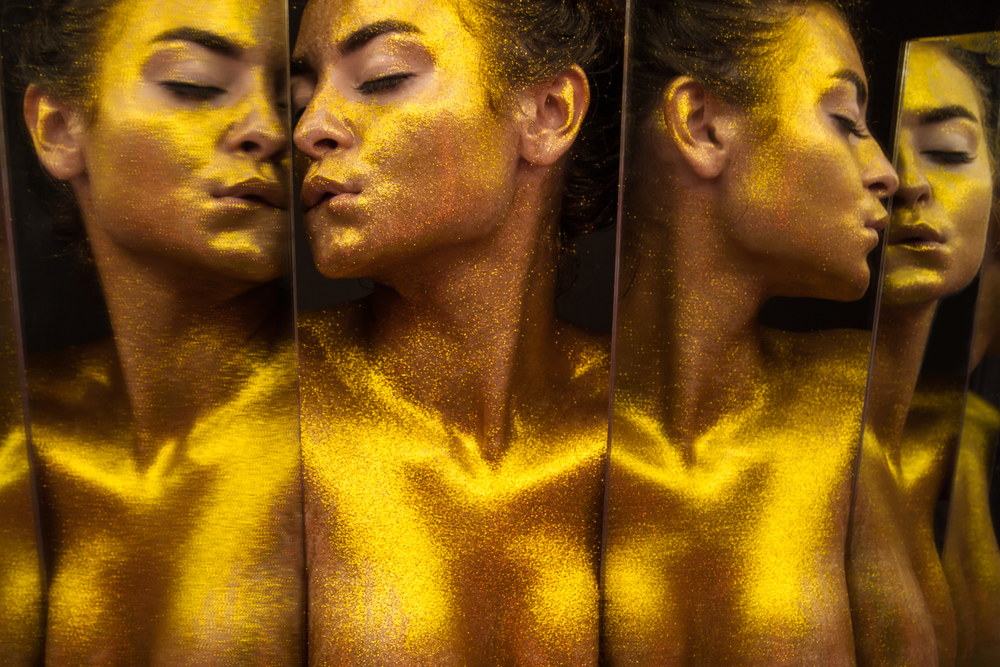How to Make a Photography Zine and Why You Need It in 2022
A limited number of copies and complete artistic freedom. That’s how you can briefly describe the essence of zines—DIY and self-published magazines by artists.
Modern zine culture formed in the 70s. Half a century ago, zine creators were opposed to mainstream glossy magazines, where conformism and consumerism reigned. Photos were the basis of almost every zine of that time.
In 2022, photo zines no longer look like folded xerox pages stapled together. With drag-and-drop graphic editors (like VistaCreate) and 24-hour print shops, anyone with an artistic idea and a set of visual content can publish their photo book.
So why not try it out? We want to inspire you to express yourself through photo zines with this article. Tips and legendary examples included.
View this post on Instagram
Cataloguing new zines in Glasgow Zine Library
Source: @glasgowzinelib
What is a photo zine?
A photo zine is a self-made, printed issue built of photos and captions. The term comes from the word “magazine”, as zines follow the style of magazines with headings, text, and illustrations put on a grid.
An important feature of a photo zine is visual storytelling. On its pages, images dominate the text and form a sequence that tells a story. Learn more about this technique in our article A Brief Guide on Sequential Storytelling.
View this post on Instagram
Mini zines in the MUC Zine Library, Munich
Source: @munichzinelibrary
There are no rules for creating photo zines; you could even say that’s their main strength. Therefore, zine-creating often becomes an outlet for photographers who become hostages of their customers’ needs and market trends.
Photo zines have no commercial purpose and are designed to spread bold artistic concepts. However, since the circulation of such issues is often minimal, some of them become valuable collectible items.
Zine-creation is an act of artistic freedom. Not surprisingly, they often set new trends and push the boundaries of photo genres and culture. And the concept of a zine has sprouted in modern culture, too—In fact, your Instagram account is a digital analog of a classic zine.
View this post on Instagram
New zines arrived at The Olympia Timberland Library, which has a collection of over 1,700 zines
Source: @olympiazinelibrary
Why publish a photo zine in 2022
“If I can run an Instagram, photoblog, personal website, and portfolio on Depositphotos, why would I publish a zine?” you might ask. Well, here are some reasons for you:
-
The creative freedom that leads to discoveries
A zine enables you to share content beyond the projects you’re working on. As a result, you can rediscover yourself, practice new skills, and even find a new audience.
View this post on Instagram
The Whale Encounters zine by Sophia Nicolov in The Scarborough Zine Library
Source: @scarbzinelibrary
-
The pleasure of observing your work in physical form
If you held a printed magazine with your photos inside at least once in your life, you know what we are talking about. If not, allow yourself to experience this pleasure.
View this post on Instagram
February 2022 zine arrivals at Edinburgh Zine Library
Source: @edinburghzinelibrary
-
Stand out by creating something unique
Most photographers don’t go beyond online activities, which makes zines a powerful tool for self-promotion. And if your zine turned into a rare treasure for art lovers—all that you offer, including images on Depositphotos or commercial shooting, are in demand.
View this post on Instagram
—From Jon Brunberg’s text on “Annika Thörn Legzdins: Ephemera”:
“The images depict urban vegetation – street environments and growing communities – in some of the world’s largest cities: in particular New York and Rio de Janeiro. These are places that create a sense of community, experiences, and other values for those that take care of and visit them, although here they are presented absent of people.”
Source: @konstig_bokhandel
There is no topic that can’t become the main one for your photo zine. A trip to the sea, the life of your friends, architecture, and sports—any of these can be your subject. However, it is important to keep your narration personal.
Zines invite audiences to see the world from your perspective and feel like a part of your story. Follow this rule when choosing a theme and photos.
6 steps of creating your photography zine
Depending on your idea, creating a zine can take hours or years. And it’s much easier to walk this path with a roadmap. We studied the experience of some zine creators to provide you with one:
Step 1. Select a topic and format
While a traditional magazine has a hired staff, an editorial and marketing plan, a budget, and contracts with advertisers and printers, a zine doesn’t have any of that. That makes it independent and DIY.
Your new zine issues may come out regularly or irregularly. In addition to release frequency, we recommend that you answer the following questions:
☑️ What is the purpose of your photo zine?
For example, to draw attention to Russia’s war crimes in Ukraine.
☑️ What stories do you tell on the pages of your zine?
For example, you may tell the story of 4 friends who were forced to leave Ukraine to escape Russian military aggression.
☑️ What should the visual and text content be?
Decide on style, quantity, and content source. Most zines have multiple authors.
☑️ How do you imagine your publication?
Decide on format, number of pages, content sections, number of illustrations, and general style. Look for references.
Don’t feel like publishing issue #2 of your zine? Check out another article for more ideas — The Best Photo Books of 2021.
View this post on Instagram
Denver Zine Library introduces new zines from their collection
Source: @denverzinelibrary
Step 2. Come up with a zine template
Develop your zine vision. You already know what stories it should tell, and what visual and verbal means it will leverage. Think about the overall design and content of each spread. Decide on a palette, fonts, indentation, title and caption style, and text-to-illustration ratio. Сonsider more than two options.
Use our recent color trend reports for inspiration — Summer Color Trends 2022: Attention-grabbing Palettes and Ready-to-use Mockups and Spring Color Trends 2022: Palettes, Collections, and Tips That Translate Freedom and Optimism.
Step 3. Design pages
Distribute your content between pages and add a final touch to each. Start by determining places for images. Headlines are next in importance, followed by photo captions.
Remember that you are telling stories through your photos. Therefore, follow the sequence and think of connections between visuals.
View this post on Instagram
“Why You Won’t Regret Watching Raising Arizona” by Bre
—An author’s caption:
“Today I made “Why You Won’t Regret Watching Raising Arizona” which was released in 1987 and is the Coen brothers second film. Funny, cute, and somewhat cartoonish, this is one of my favorite Nic Cage movies without being my favorite Coen brothers film.
With a light-hearted comedic tone, we see Cage shine as the skinny robber who can’t shake his criminal lifestyle even into fatherhood”
Source: @brattyxbre_
Step 4. Add text and make edits
Perhaps, long before this stage, you already had ideas for the name of your zine, its categories, headings, and much more. The result of this step should be a print-ready zine layout.
Use our handy guide on adding texts to images if you are new to copywriting — A Checklist on Creating Catchy Photo Captions.
We also advise you to follow the tactics of traditional magazine editorials. When you’re done with the pages, print a test copy and see how you can improve it. In particular, look for forgotten credits and misprints.
Step 5. Print your zine!
After a few checks, order your zine to be printed. Decades ago, zines were printed on a home printer and then copied with Xerox. This approach does not allow the audience to fully appreciate the quality of your photos, although it gives your publication a certain charm.
Step 6. Present and distribute your zine
If we were talking about a traditional magazine distributed in kiosks and by subscription, your marketing and distribution strategy would be ready long before the release. But zines are created by enthusiasts who are not interested in profit (and sometimes even a broad audience).
A typical zine distribution network includes your community, art galleries, and bookstores.
Zines are also hunted by collectors and libraries—for example, one of the most notable zine library collections includes over 12,000 items (The ABC No Rio Zine Library). And top art museums, including Tate and MoMA, devote their research to the evolution of zines and buy them to enrich their collections.
Your zine distribution plan might look like that:
- Release announcement to friends, colleagues, partners, and customers (if appropriate)
- Zine presentation in a cafe, library, gallery, and other appropriate places, including online platforms
- Mailing to independent bookstores and other areas with an offer to buy your zines
- Taking part in book festivals, events for DIY enthusiasts, and thematic exhibitions
- Getting your zine in online libraries (free or paid)
Modern photography zines to check out
It’s almost impossible to compare zines because of their non-conformist nature. We just want to give you some bright examples of them created by professional photographers, stars, and activist communities:
? I’d Rather Drink Muddy Water and Sleep in a Hollow Log
by Dash Snow
2007, non-periodic
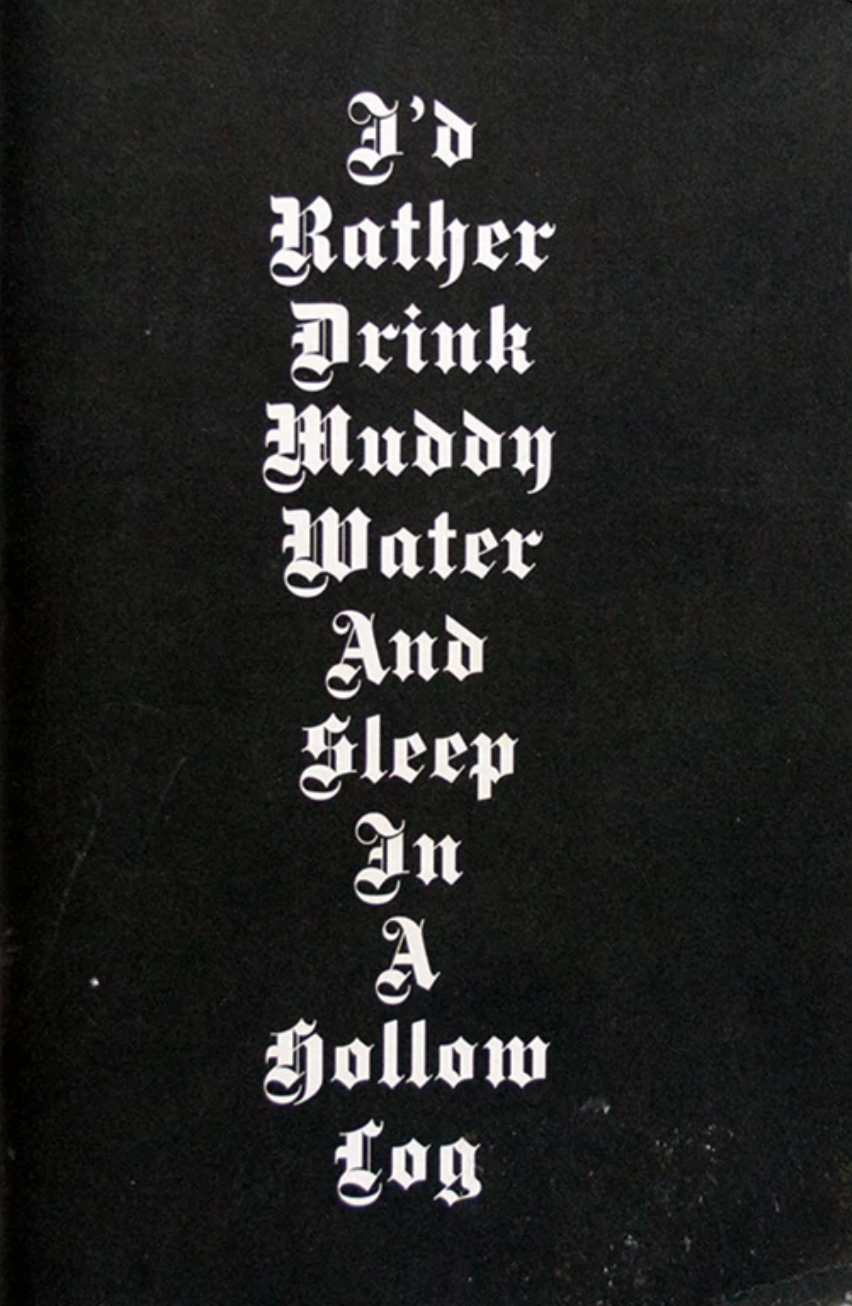
Source: Janus
Dash Snow was an American artist who passed away in 2009. Photography was his primary medium, and the others were graffiti and collage. The artist lived in New York and documented the dark side of city life. “I’d Rather Drink Muddy Water and Sleep in a Hollow Log” is an iconic zine that reflects the everyday routine of New York’s creative outsiders and the attributes of the decadent urban environment they lived in—neverending parties, cigarette smoke, and nudity.
? Polyester Zine
by London-based feminists and Ione Gamble as editor-in-chief
since 2014, periodic
Polyester Zine is a leading underground zine in London that fashion editors once called a massive comeback of the zine genre. Although it is mainly dedicated to feminism, gender identity issues, and their reflection in modern fashion, it is Polyester Zine that UK creatives keep an eye on. The underground magazine collaborates with models and photographers, and leverages kitsch, trash, and camp styles in its aesthetics.
? No Time For Love
by Chloë Sevigny
2015, non-periodic
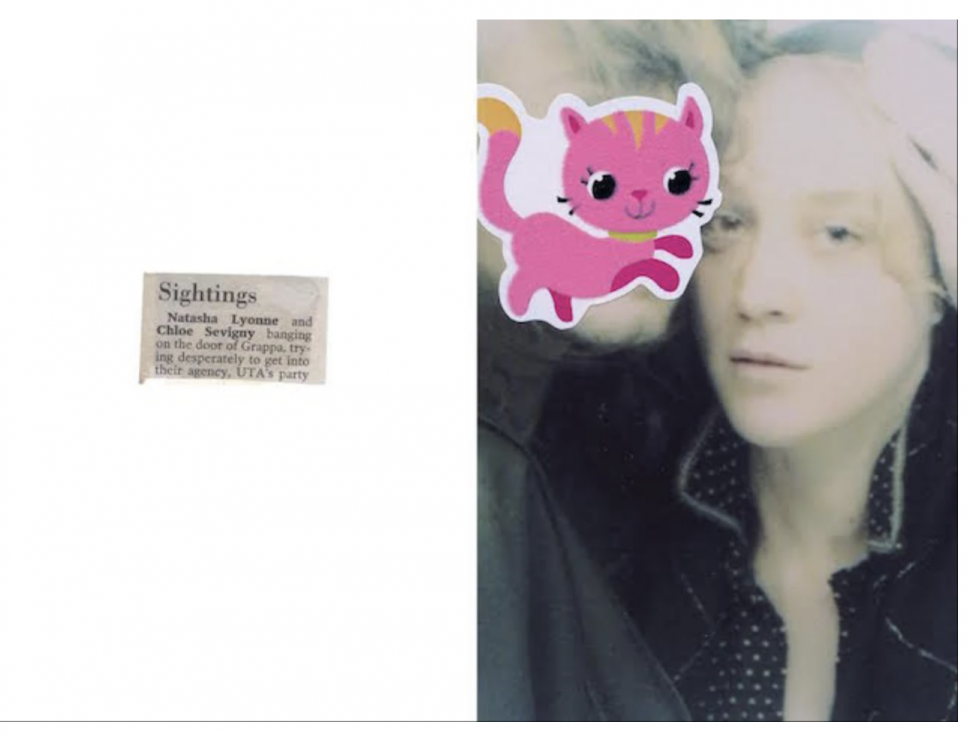
Source: Innen
Chloë Sevigny is an actress and Golden Globe winner. She has also appeared as the author of various zines. “No Time For Love” is a 90s-style zine dedicated to Chloë’s past relationships and her current attitude toward people who were important to her. The edition features candid photos where the actress interacts with her exes. Their faces are buffered and covered by funny stickers. Here, we see a real-life situation Chloë lived through and think of our romantic loves from the past.
? Boys Don’t Cry
by Frank Ocean
2016, non-periodic
Perhaps one of the most hyped (and extraordinary) photography zines of our time was created by Frank Ocean, the US singer, songwriter, and photographer. The issue is a self-standing creative product. However, it was soon accompanied by Frank’s new album “Blonde”. “Boys Don’t Cry” is personal, touching, and highly aesthetic. The issue includes interviews with the singer’s mother and other relatives, screengrabs of his browser history, a first screenplay, and numerous photos of shining cars and women.
? Minimal Zine
Arturo Mc Clean as editor-in-chief
since 2022, periodic
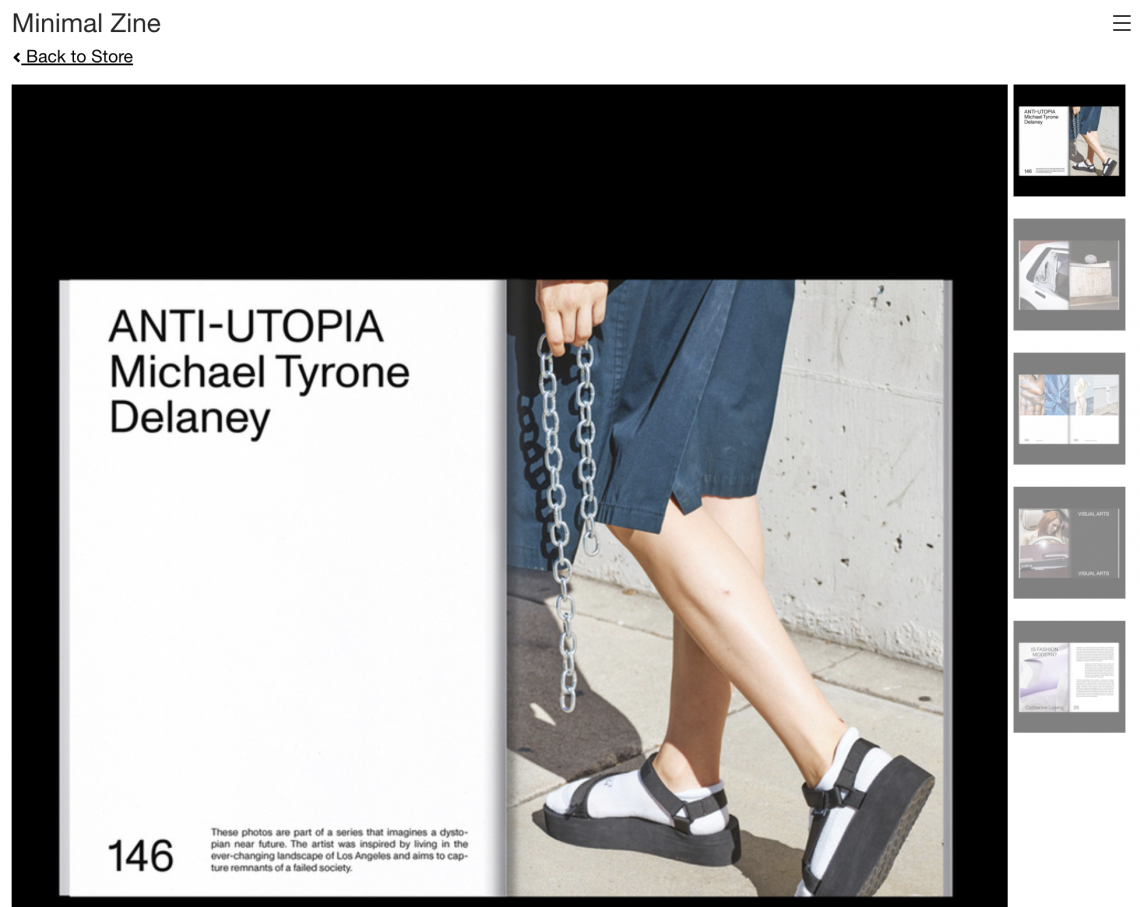
Source: Minimal Zine
This independent photography magazine is bi-annual, which is not typical for zines (most of them are published just once or are irregular). The idea behind “Minimal Zine” is to find beauty in ordinary things with fewer details. One of the first issues includes works by photographers, artists, and writers, and consists of over 200 pages. Along with eye-pleasing contemporary visuals, you’ll find reflective essays, short stories, and even poetry. Take time to see their Instagram account too.
? Flâneurism
by Rik Moran
since 2015, periodic
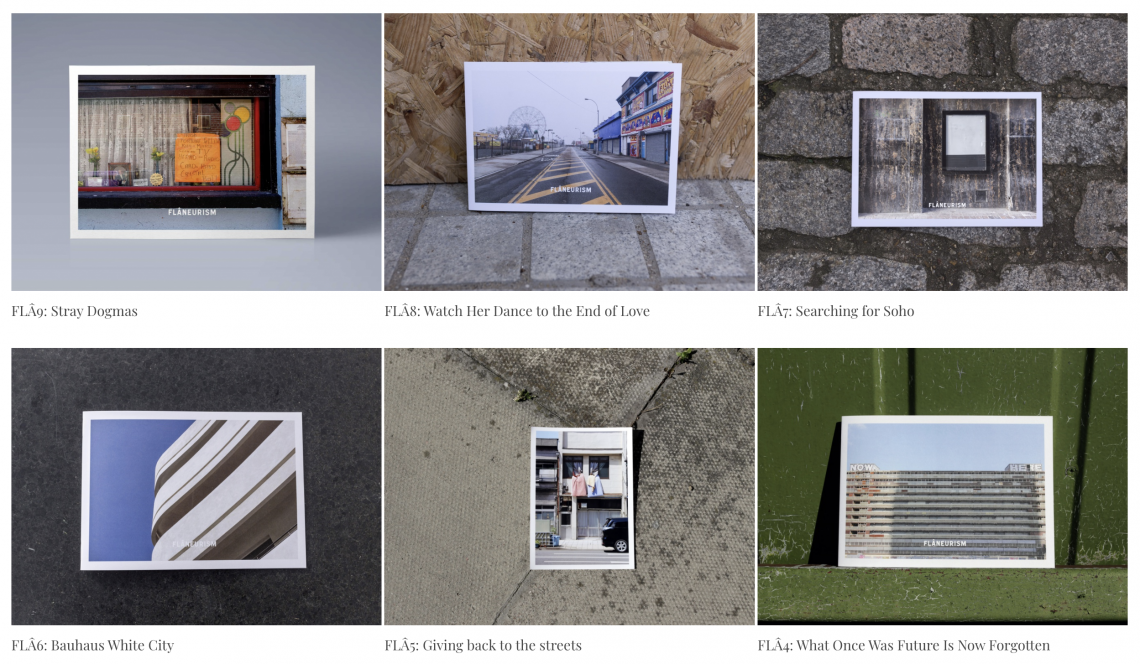
Source: Flâneurism
Flâneurism is an umbrella name for zines by photography professional Rik Moran from London. The artist captures “unseen and hidden” to show us the architecture, environments, and spaces of modern cities. Flâneurism appears to be a documentary series that consists of several parts. For instance, “Once Were Olympians” depicts what’s left soon after the Olympics in Athens, and how private investors might redevelop these territories. Another zine edition, “What Once Was Future is Now Forgotten,” reflects the sad story of the Heygate Estate in London that recently went through the process of gentrification.
? Supreme X Hamburger Eyes San Francisco
2019, non-periodic
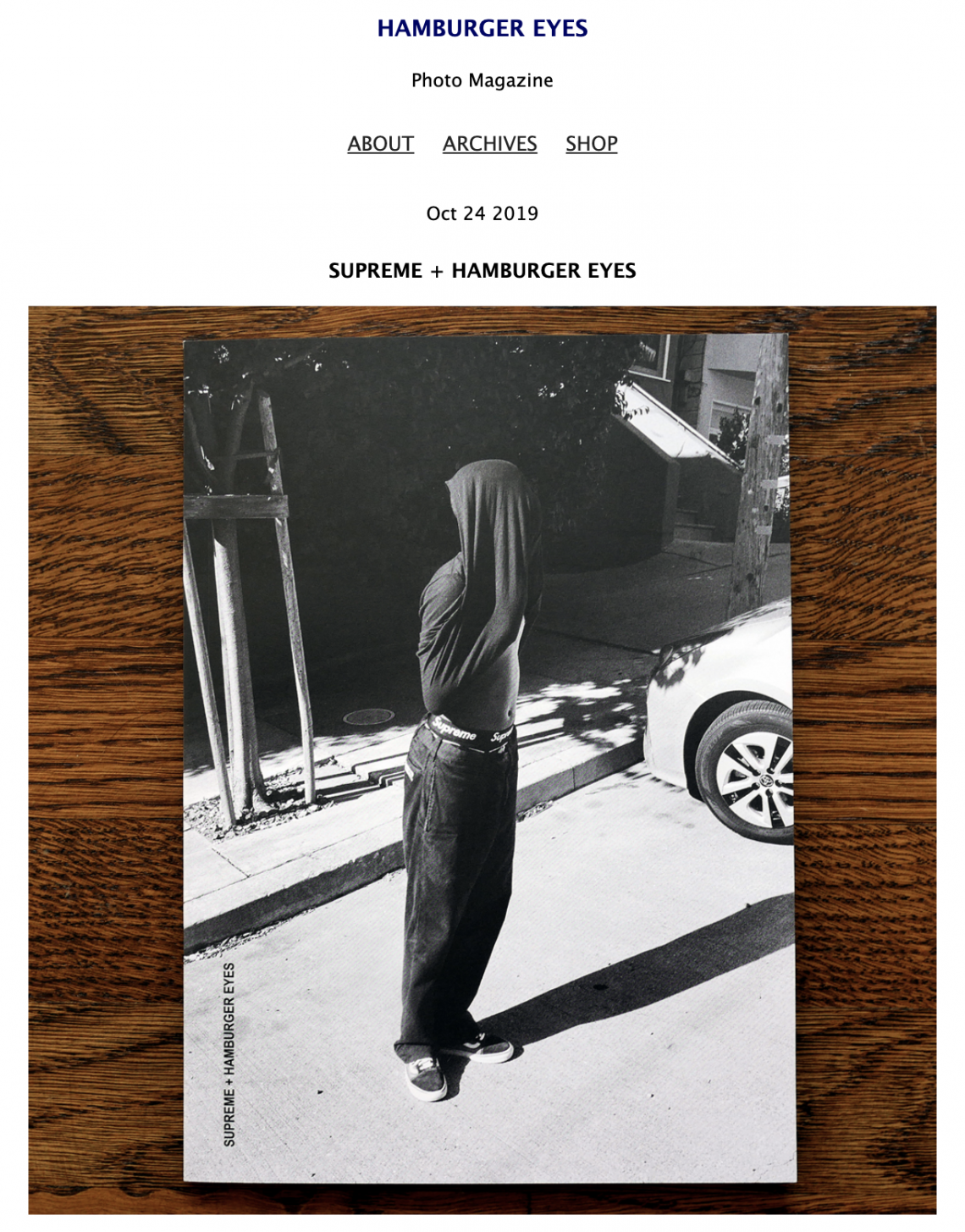
Source: Hamburger Eyes
This zine is an example of using this genre for marketing communication. Supreme released the 64-page edition to mark the launch of its new San Francisco store; it includes shots made by Hamburger Eyes photographers, featuring the Supreme Team in San Francisco. Hamburger Eyes is a black and white photography community from California that publishes zines and books and organizes photo exhibitions.
Wrapping up
Artists come together to create independent, censor-free magazines. Amateur photographers release photo albums to tell a personal story with pictures and captions. Sports and music communities collaborate with brands to fight for common values using the magazine format.
The internet offers us any visual content and can take us far from the mainstream, but at the same time, it has an undeniable disadvantage over photo zines. Websites don’t have a distinct smell, and social media pages are impossible to rustle on a park bench.
Whatever zine you are up to, your experience and the experience of its audience will be unique and bring you nothing but new impressions and skills. So good luck with your first issue!
Don’t miss out on other thematic materials:
Photo Collection: This Could Be a Book Cover
Depositphotos and Osnovy Publishing Present the Second Issue of SALIUT Magazine
Liam Wong on the “TO:KY:OO” Book and Key Takeaways from Being a Photographer
